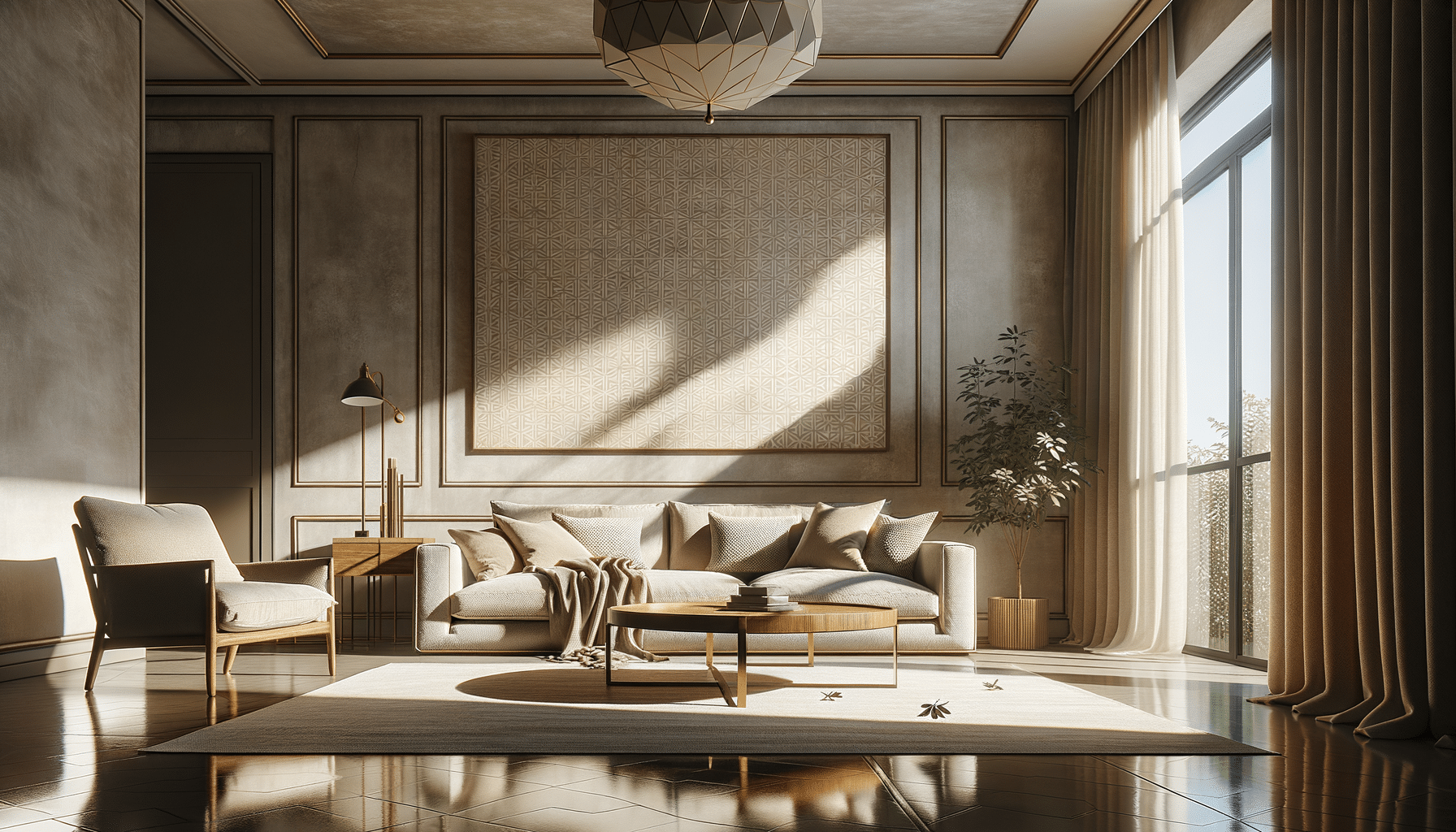
Exploring the World of Wallpaper Rolls: Transforming Spaces with Style
The Evolution of Wallpaper: A Journey Through Time
Wallpaper has been an integral part of interior design for centuries, evolving from its early days as a luxury item for the elite to a widely accessible tool for personalizing spaces. The journey of wallpaper began in the 16th century when it was used as a cost-effective alternative to tapestries. These early wallpapers were hand-painted, making them exclusive and expensive. As time progressed, technological advancements in printing and production methods allowed wallpaper to become more affordable and widely available.
In the 18th and 19th centuries, the industrial revolution played a significant role in the mass production of wallpaper, introducing intricate patterns and vibrant colors. The introduction of wallpaper rolls revolutionized the market, making it easier to apply and more accessible to the average homeowner. This evolution continued into the 20th century, with the advent of new materials and designs, reflecting the changing tastes and styles of each era.
Today, wallpaper rolls offer a diverse range of styles, patterns, and textures, allowing homeowners to transform their spaces with ease. From traditional floral designs to contemporary geometric patterns, wallpaper rolls provide endless possibilities for creativity and personalization. This evolution not only highlights the adaptability of wallpaper but also its enduring appeal as a design element.
The Versatility of Wallpaper Rolls in Modern Interiors
Wallpaper rolls have become a versatile tool in modern interior design, offering a range of styles and textures that can dramatically alter the ambiance of a room. Unlike paint, which provides a uniform finish, wallpaper can introduce depth and character to spaces through its patterns and textures. This versatility allows homeowners to create unique environments tailored to their personal tastes.
One of the most appealing aspects of wallpaper rolls is their ability to mimic various materials such as wood, brick, or marble, providing a cost-effective way to achieve high-end looks. Additionally, wallpaper can be used to create accent walls that draw the eye and add interest to a room without overwhelming the entire space.
Moreover, wallpaper is not limited to walls alone. It can be applied to ceilings, furniture, and even used as a backdrop for shelving units. This adaptability makes it a valuable tool for designers and homeowners looking to inject personality and style into their interiors.
With the growing trend of DIY home improvement, wallpaper rolls offer an easy and efficient way to refresh a space without the need for extensive renovations. This ease of application, combined with the wide range of available designs, makes wallpaper a popular choice for those looking to transform their living environments.
Choosing the Right Wallpaper: Considerations and Tips
Selecting the appropriate wallpaper for a space involves several considerations to ensure a harmonious and effective design. The first step is to assess the room’s purpose and existing decor. For instance, a calming, neutral pattern may be suitable for a bedroom, while a bold, vibrant design could enhance a living room or dining area.
Lighting also plays a crucial role in wallpaper selection. Rooms with ample natural light can accommodate darker, more saturated colors, while spaces with limited light might benefit from lighter, reflective designs to enhance brightness. Additionally, the scale of the pattern should be proportionate to the size of the room; large patterns can overwhelm small spaces, while intricate designs may get lost in larger rooms.
When choosing wallpaper rolls, it is essential to consider the material and finish. Vinyl wallpapers are durable and easy to clean, making them ideal for high-traffic areas or spaces prone to moisture, such as kitchens and bathrooms. On the other hand, fabric or paper-based wallpapers offer a more luxurious feel but may require more careful maintenance.
Finally, it is advisable to order samples and test them in the intended space before committing to a full roll. This allows you to observe how the wallpaper interacts with the room’s lighting and furnishings, ensuring a cohesive and pleasing result.
The Environmental Impact of Wallpaper: Sustainable Choices
As environmental concerns continue to rise, the wallpaper industry has responded with more sustainable options. Eco-friendly wallpapers are now available, made from natural fibers and utilizing non-toxic dyes and adhesives. These sustainable choices not only reduce environmental impact but also promote healthier indoor air quality, free from harmful chemicals.
Recycled wallpapers are another option, offering a way to repurpose materials while still providing stylish and functional designs. These wallpapers often incorporate post-consumer waste, reducing the demand for new raw materials and minimizing landfill contributions.
Homeowners can further reduce their environmental footprint by choosing wallpaper rolls from companies that prioritize sustainability in their production processes. This includes reducing water and energy consumption, minimizing waste, and employing ethical labor practices.
By opting for sustainable wallpaper, consumers can enjoy the aesthetic benefits of wallpaper while contributing to a more environmentally conscious lifestyle. This shift towards sustainability in home decor reflects a broader trend towards responsible consumption and production.
Installation and Maintenance: Ensuring Longevity
Proper installation and maintenance are crucial to ensuring the longevity and appearance of wallpaper rolls. Before installation, it is important to prepare the walls by cleaning them thoroughly and repairing any imperfections. This provides a smooth surface for the wallpaper to adhere to, preventing bubbling or peeling.
When installing wallpaper, precise measurements and careful alignment are essential to achieving a seamless look. It is advisable to start from a corner and work methodically across the room, using a wallpaper smoother to eliminate air bubbles and ensure a secure bond.
For those new to wallpapering, enlisting the help of a professional can ensure a flawless finish and save time and effort. However, many DIY enthusiasts find the process rewarding and achievable with the right tools and instructions.
Maintenance involves regular cleaning to keep the wallpaper looking fresh. Depending on the material, this may include dusting or gently wiping with a damp cloth. It is crucial to avoid abrasive cleaners or scrubbing, which can damage the wallpaper’s surface.
By following these installation and maintenance tips, homeowners can enjoy the beauty and functionality of wallpaper rolls for years to come, making them a worthwhile investment in home design.


